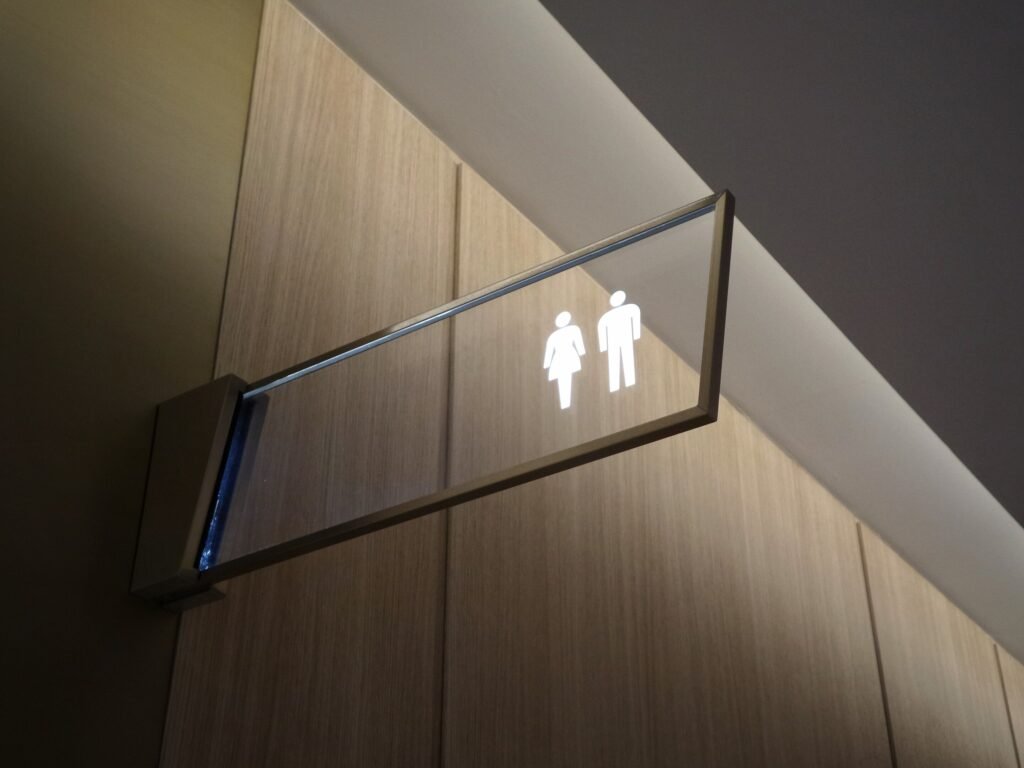If you’re a parent or have a chronic health condition that needs quick or frequent trips to the bathroom, you’ve probably mapped out the half-decent public toilets in your area.
But sometimes, you don’t have a choice and have to use a toilet that looks like it hasn’t been cleaned in weeks. Do you brave it and sit on the seat?
What if it looks relatively clean: do you still worry that sitting on the seat could make you sick?
What’s in a public toilet?
Healthy adults produce more than a liter of urine and more than 100 grams of poo daily. Everybody sheds bacteria and viruses in feces (poo) and urine, and some of this ends up in the toilet.
Some people, especially those with diarrhea, may shed more harmful microbes (bacteria and viruses) when they use the toilet.
Public toilets can be a “microbial soup,” especially when many people use them and cleaning isn’t as frequent as it should be.
What germs are found on toilet seats?
Many types of microbes have been found on toilet seats and surrounding areas. These include:
- bacteria from the gut, such as E. coli, Klebsiella, Enterococcus, and viruses such as norovirus and rotavirus. These can cause gastroenteritis, with bouts of vomiting and diarrhea
- bacteria from the skin, including Staphylococcus aureus and even multi-drug resistant S.aureus and other bacteria such as pseudomonas and acinetobacter. These can cause infections
- eggs from parasites (worms) that are carried in poo, and single-celled organisms such as protozoa. These can cause abdominal pain.
There’s also something called biofilm, a mix of germs that builds up under toilet rims and on surfaces.
Are toilet seats the dirtiest part?
No. A recent study showed public toilet seats often have fewer microbes than other locations in public toilets, such as door handles, faucet knobs, and toilet flush levers.
These areas are frequently touched, often with unwashed hands.
Public toilets in high-traffic areas are used hundreds or even thousands of times each week. While some are regularly cleaned, others, such as those in parks or bus stops, may only be cleaned once a day or less frequently, allowing germs to accumulate. Signs that a toilet hasn’t been cleaned include a urine odor, dirty floors, and visible grime.
However, the main concern is not just sitting on the toilet seat but what occurs when toilets are flushed. Flushing without a lid can create a “toilet plume” that releases tiny droplets into the air, carrying bacteria and viruses from the toilet bowl up to 2 meters.
Additionally, hand dryers blowing air can spread germs if hands are not washed properly, potentially contaminating individuals and the restroom.
How can germs be spread?
Germs from public toilets can be transmitted in several ways, including through skin contact, touching your face, breathing in particles from toilet plumes or hand dryers, and toilet water splash.
What can you do to stay safe?
To protect yourself, consider using toilet seat covers or placing toilet paper on the seat before sitting, wiping the toilet lid with an alcohol wipe before use, washing your hands thoroughly with soap and water, carrying hand sanitizer or antibacterial wipes, avoiding hand dryers, sanitizing your phone regularly, and cleaning baby changing areas before and after use.
Is it safe to sit on public toilet seats?
For most healthy individuals, sitting on a public toilet seat is low-risk. However, you can use an alcohol wipe or a toilet seat cover for added peace of mind. Remember that most infections come from dirty hands, door handles, toilet plumes, and phones used in bathrooms, so focus on good hygiene practices instead of worrying about sitting on the seat. And avoid hovering over the toilet, as this can strain the pelvic floor and make it difficult to fully empty the bladder.


